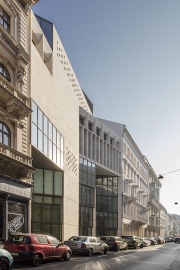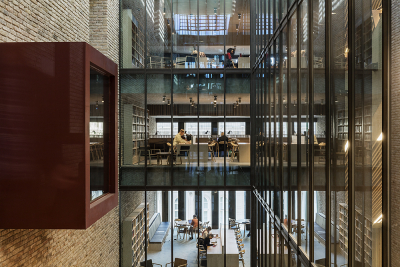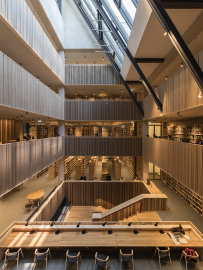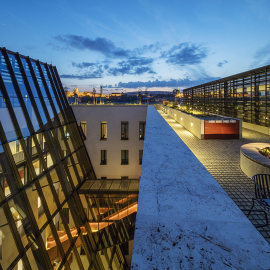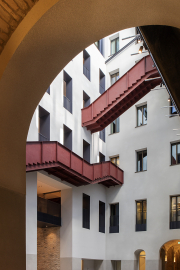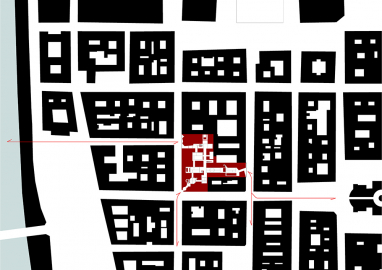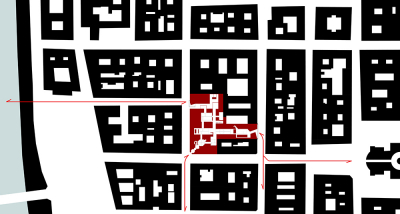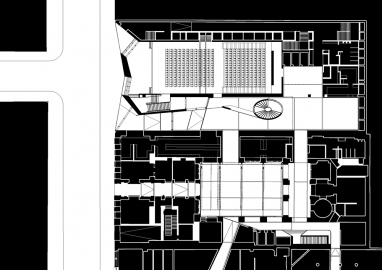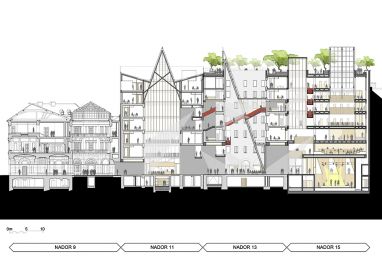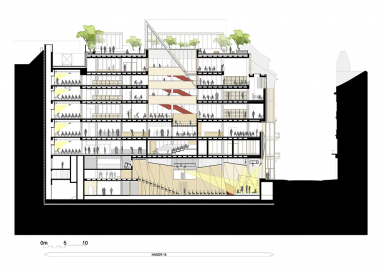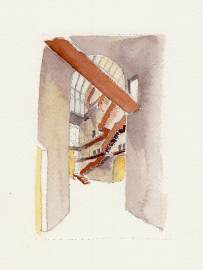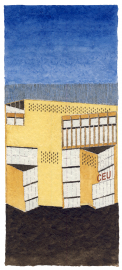Central European University
This is the first phase of a campus masterplan for the Central European University Budapest. The project changes the relationship of the university to the city. Phase 1 provides a public face for the university, a new entrance on axis with the Danube, a library and learning café for citizens and students. The campus becomes integrated with the urban realm.
The new building on Nador Utca forms the main entrance to the University. It houses the library and learning commons over a multi-purpose auditorium and conference facilities. The adjoining building is radically refurbished to provide a covered courtyard for public events, with a business school and teaching spaces at upper levels. A roof garden straddles both buildings to provide views over the city skyline. Budapest is a city of courtyards and passageways. The streetscape is repetitive in plot dimension and only slightly varied in parapet height. The contemporary expression of the new building at Nador 15 is designed to be in sympathetic conversation with its neighbours. The limestone façade is locally sourced from the same quarry as most of the historic buildings in the city. This is the first new building to be built in recent times in this historically protected context.
The existing CEU campus consisted of adjoining buildings, each with their own entrance, with minimal interconnectivity between them. We identified the opportunities to intervene in this downtown urban block, to make what was a disconnected set of buildings into an open campus. We used selective subtraction and addition to transform the campus into a metaphorical crossroads, with existing and new facilities linked through a legible sequence of connected courtyards. The functional layout provides easy communication between interrelated adjacencies, clusters connected by convivial social spaces, encouraging interaction and collaboration between academic departments.
We proposed a phased strategy, making connections between existing courtyards, demolishing inefficient buildings and designing new buildings around a series of courts. Courtyards are roofed over to provide a tempered environment from the climatic extremes in winter and summer. The courtyards are the campus, providing circulation system and social space. Openings are cut through to provide visual connections. Flying staircases interconnect department offices to teaching spaces.
The environmental strategy of the project is to use the interconnected semi-conditioned courtyard spaces to bring light and air to the heart of this high-density campus. This approach has manifold benefits over the building’s lifecycle in the climate of Budapest, allowing a mixed-mode operation for much of the year, improved visual and thermal comfort for staff and students, and energy / carbon savings through optimized building services. Landscaped Roof Gardens (intensively planted) play an important role in reducing heat gain in the buildings and enhance the environmental sustainability of the project. Landscaped gardens are included on the roofs of new and existing buildings. These form an accessible roofscape; a ‘hanging gardens of Budapest’. The well-tempered environment of the covered courtyards, combined with a practical approach to natural ventilation ensure a low-carbon economical strategy for long-term energy conservation. The environmental challenges were significant. The climate is extreme, the existing University had been highly air conditioned. We developed a low carbon environmental strategy for long term energy conservation.

